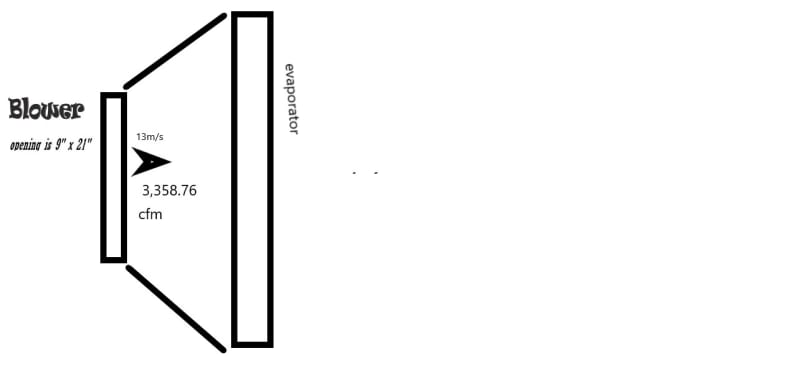inventdv
Automotive
- Sep 16, 2021
- 8
[highlight #73D216][/highlight]Looking for some help with this design it’s a dehumidifier for a paint booth non recirculating, what it will do is output dehumidified air that gets immediately evacuated by an exhaust fan.
The ideal cfm across an evaporator is 400 cfm(what I read) so I'm aiming for this or even 500, but I made some calculations with my current blowers, the opening is 9” x 21” and flows 13ms (measured) and thus I calculated over 3000 cfm into the evaporator shown on pic, how can I reduce this flow over an evaporator whilst keeping my same cfm output into the booth, at first I was thinking maybe if I increase the evaporator size it may but the air flow in m/s is the same. Now I'm thinking what if I use smaller multiple evaporators before the blower (blower sucking through evaporator) and having each one spilling into a main duct. The same can be done after the blower but I'm thinking the air would be dong strange things trying to push through multiple ducts?

The ideal cfm across an evaporator is 400 cfm(what I read) so I'm aiming for this or even 500, but I made some calculations with my current blowers, the opening is 9” x 21” and flows 13ms (measured) and thus I calculated over 3000 cfm into the evaporator shown on pic, how can I reduce this flow over an evaporator whilst keeping my same cfm output into the booth, at first I was thinking maybe if I increase the evaporator size it may but the air flow in m/s is the same. Now I'm thinking what if I use smaller multiple evaporators before the blower (blower sucking through evaporator) and having each one spilling into a main duct. The same can be done after the blower but I'm thinking the air would be dong strange things trying to push through multiple ducts?





